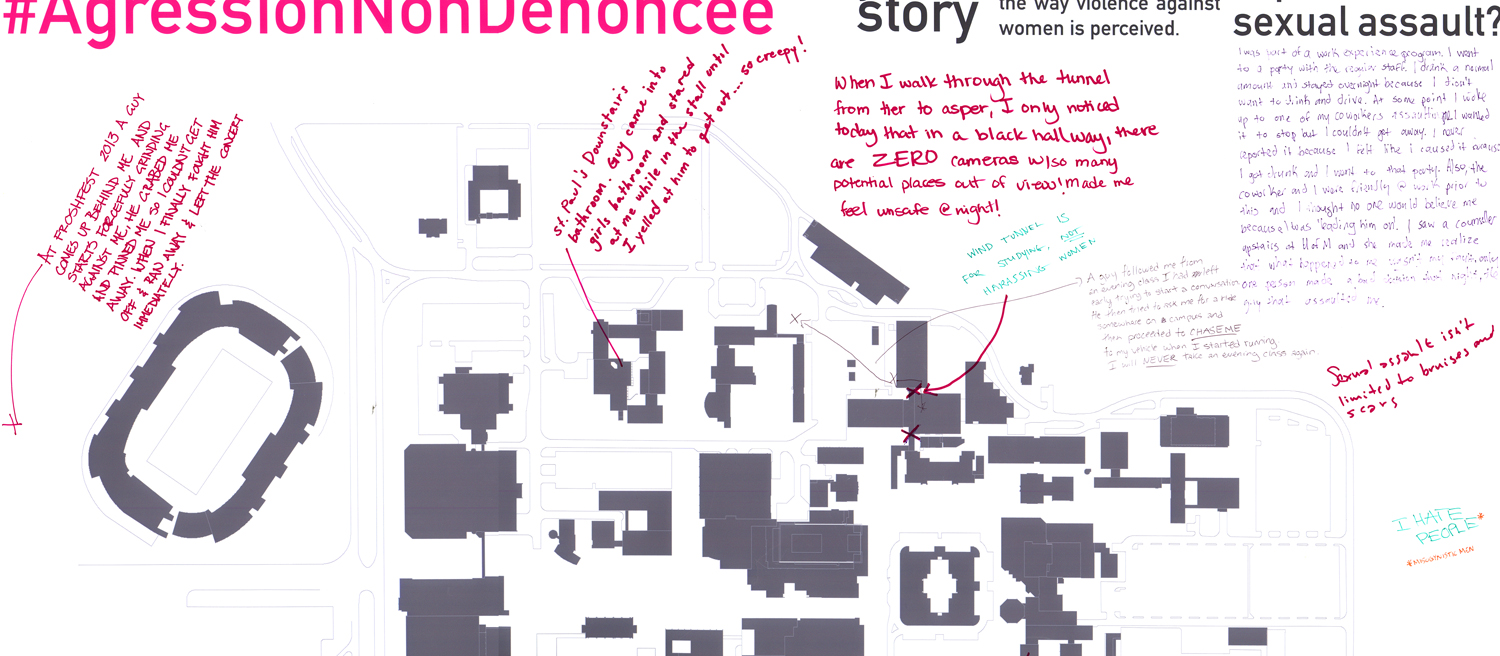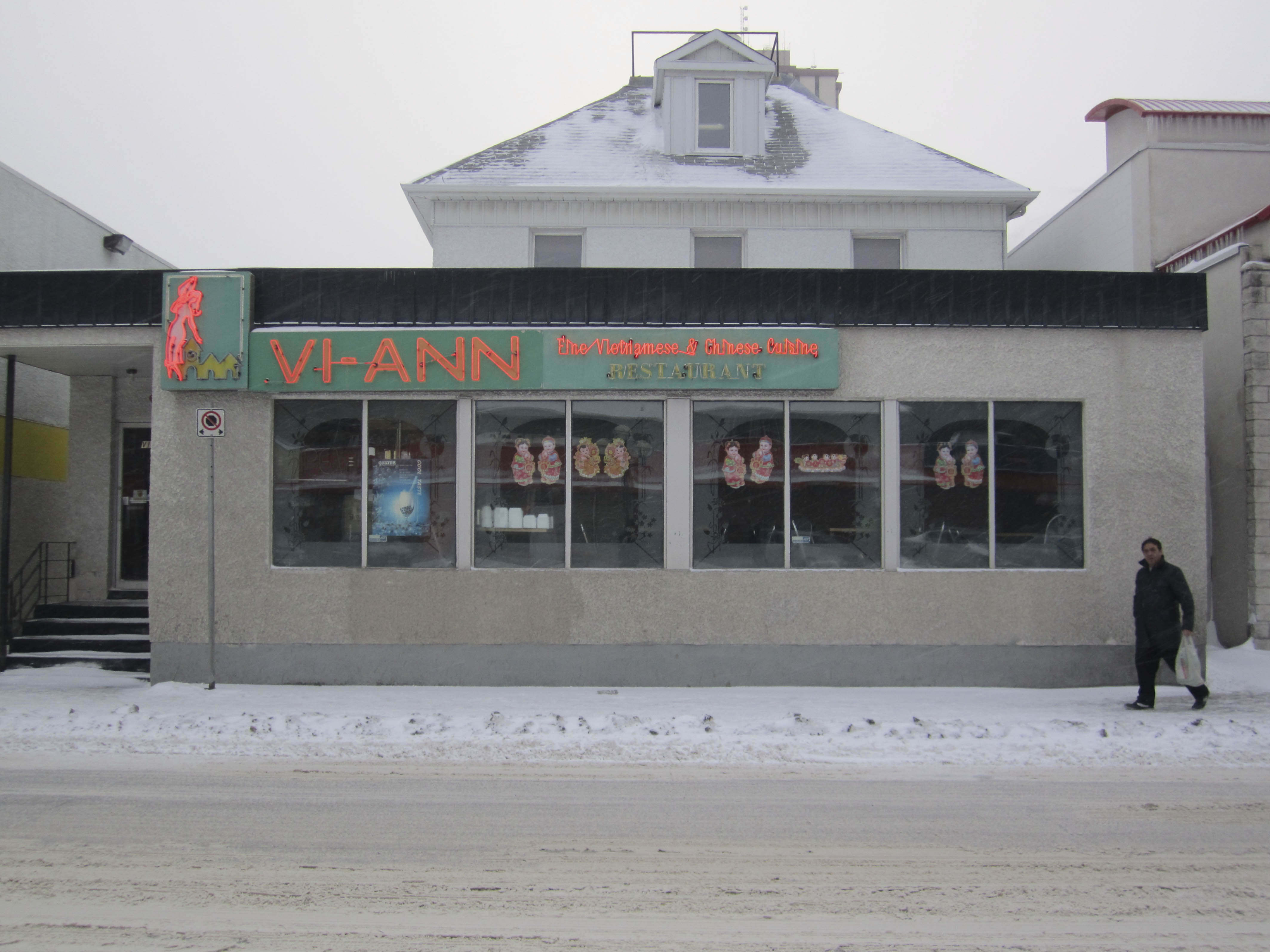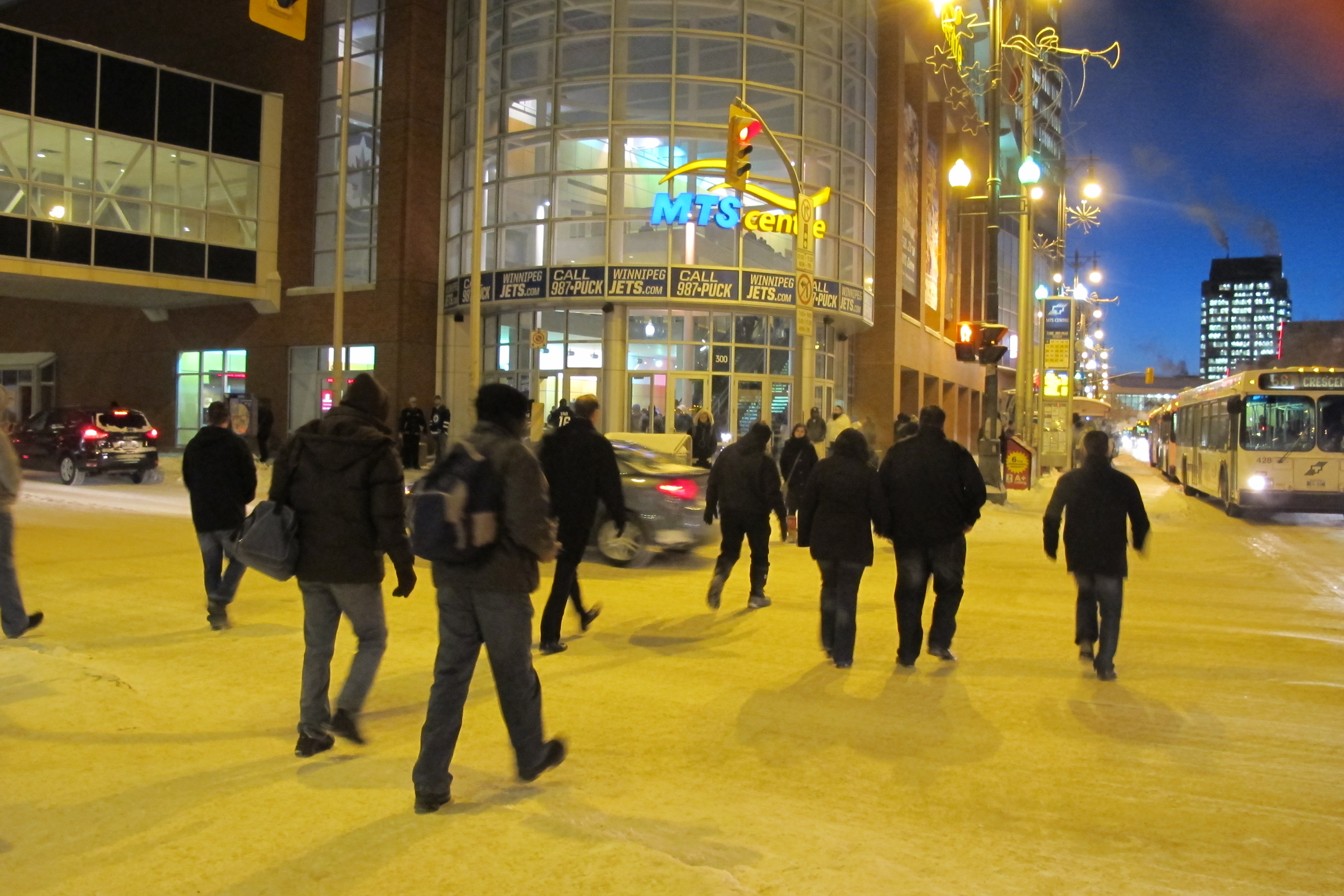The creator of unidentified sexual assault maps, inviting people to share their experiences of sexual assault, posted in University Centre at the University of Manitoba last December has been identified as Caroline Inglis, a graduate student in the faculty of architecture.
The maps are a part of her design thesis project focusing on the relationship between the built environment and violence against women.
In early December, the Manitoban published an article about the maps of the U of M Fort Garry campus and downtown area. At the time of publication, the creator of the maps had not been identified.
With questions such as, “Is sexual harassment a problem on campus?” the questions were clear but the poster’s objective remained unknown.
After reading the Manitoban article, Inglis added a statement of purpose to the maps, as well as a citation for the statistic showing that 71 per cent of incidences of sexual assault are not reported. That information was provided by the government of Nunavut, where Inglis conducted research.
When asked what she thought about one response to the maps suggesting that resources for survivors of sexual assault should have been included on posters, Inglis said, “I didn’t think about it when I first posted it, but I agree that it can bring up so many emotions just to tell a story, so next time I’ll be sure to include it; it’s really important.”
Inglis said that the information written on the maps will be used primarily for her research project, which will ultimately culminate in a proposal for a new women’s shelter in downtown Winnipeg.
Inglis further explained her choice of the two locations shown in the maps. “The area downtown centres on the site I’m using for my thesis proposal. I added the university map as a supplement because the first couple of responses I was getting were actually from on campus.
“One of the things I’m trying to push for in my thesis is an engagement with people,” she said. “The fact that people are doing just that by writing on a poster is a success.”
A gendered issue?
One comment on the Manitoban website accused the project of being sexist because it ignored the issue of assault against men.
“I wasn’t actively trying to exclude anyone or bar anyone from adding their story,” Inglis replied. “My design thesis project is a shelter for women. That’s why I focused on that issue.”
Statistics show numbers as high as two in five cases of domestic violence in which the victims are men. It is estimated that one in ten adult men have been sexually assaulted and the majority of perpetrators are heterosexual men, according to the Sexual Assault Centre in Hamilton, Ontario.
The Canadian Women’s Foundation and Statistics Canada provide a more in-depth analysis of these numbers, bringing attention to the difference between types of violence to which men are subjected.
Males, according to a 2008 report by Statistics Canada, “are more likely to be the victims of physical assault and homicide, while sexual assault victims are overwhelmingly female.” According to their research, police say that men are more likely to be assaulted by a stranger, while women are more likely to be assaulted by someone they know.
Statistics from the Canadian Women’s Foundation show that 49 per cent of homicides of women are committed by a current or ex-lover, while only seven per cent of homicides of men are committed by sexual partners.
Defining the issue
One of the questions on Inglis’s poster read: How do you define sexual assault?
“People don’t really know how to define [sexual assault] or how to deal with it, so they just don’t,” says Inglis.
Regarding the difference between the terms sexual assault and domestic violence, Inglis said, “In most instances of sexual assault, the assailant is known to the victim, so it’s hard to differentiate the two. For it to be domestic violence, do you have to be married? What kind of relationship do you have to have?
“I think the term ‘sexual assault’ is more helpful to use because it’s more inclusive for all people to relate.”
The problem of defining sexual assault is further exemplified on the City of Winnipeg’s CrimeStat website, which provides local crime information.
The website defines sexual assault as an “offence that combines the components of assault with circumstances of a sexual nature where the suspect is not known to the victim. This would include a range of offences from unwelcome sexual comments or inappropriate touching, through to forced intercourse (rape).
“The Sexual Assault definition changed as of January 1st, 2008 in response to citizen’s feedback, to map occurrences involving only suspect(s) not known to the victim,” reads the website.
In Winnipeg, from Jan. 26, 2014 to Jan. 7, 2015, there were 173 cases of sexual assault, in addition to 212 cases of “known offender sexual assaults.” These numbers are based on occurrences recorded by police and are considered as preliminary crime data.
The rates of gendered violence are typically based on formal police reports. Due to the high level of underreporting for sexual assault, statistics about these assaults underestimate the prevalence and extent of the issue.
For immediate 24-hour crisis intervention in Winnipeg, call the Sexual Assault Crisis Line: 204-786-8631





